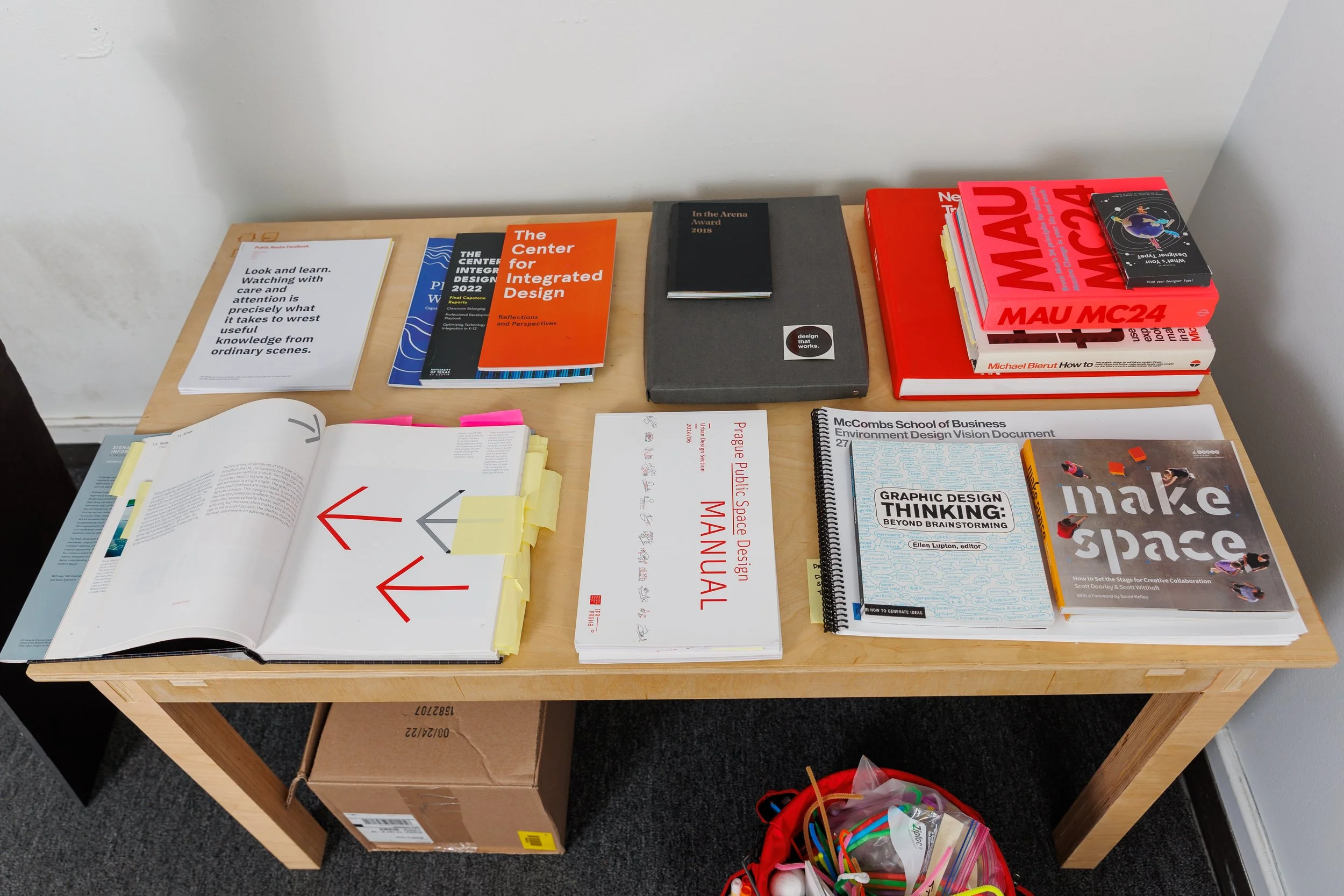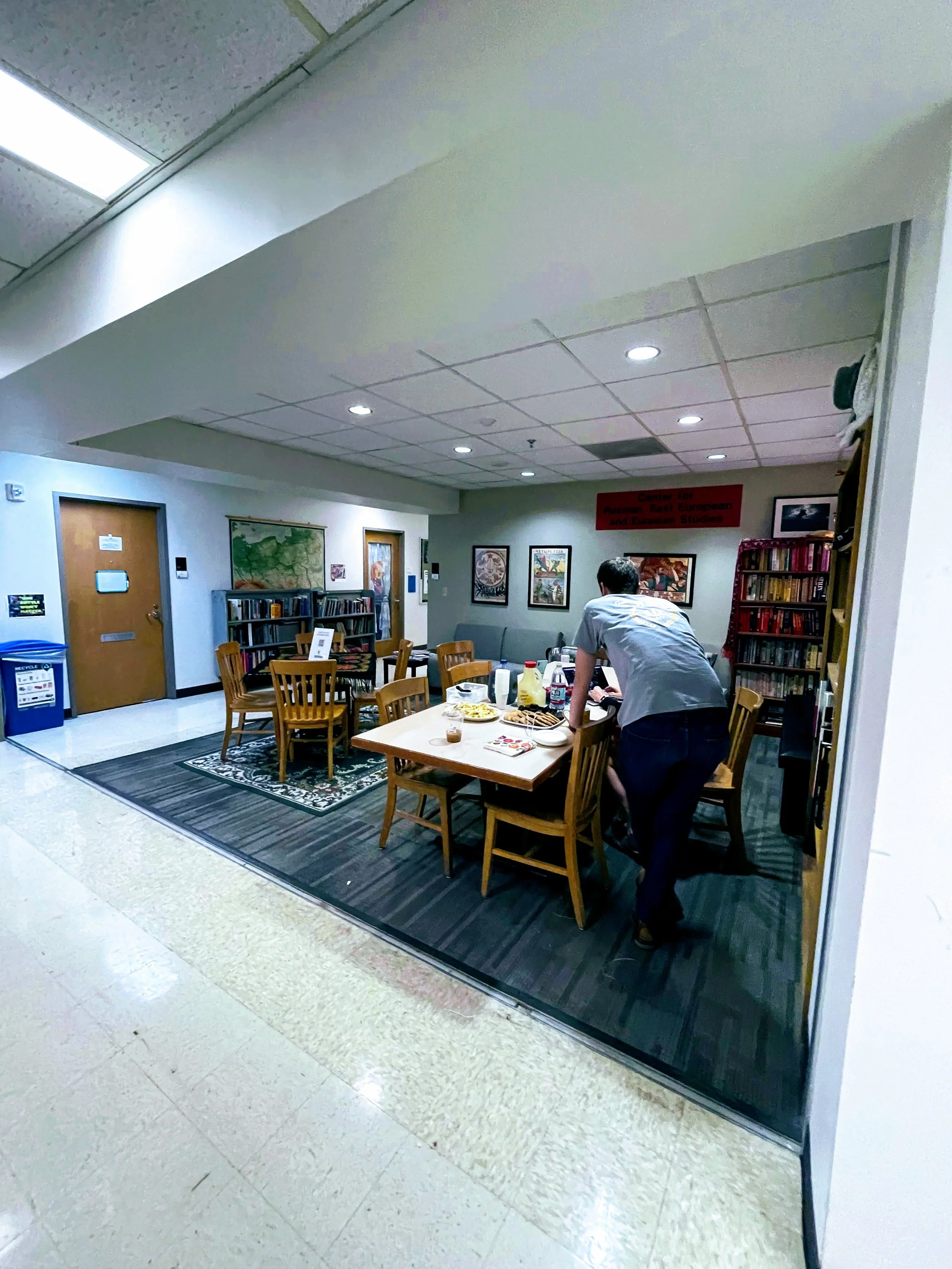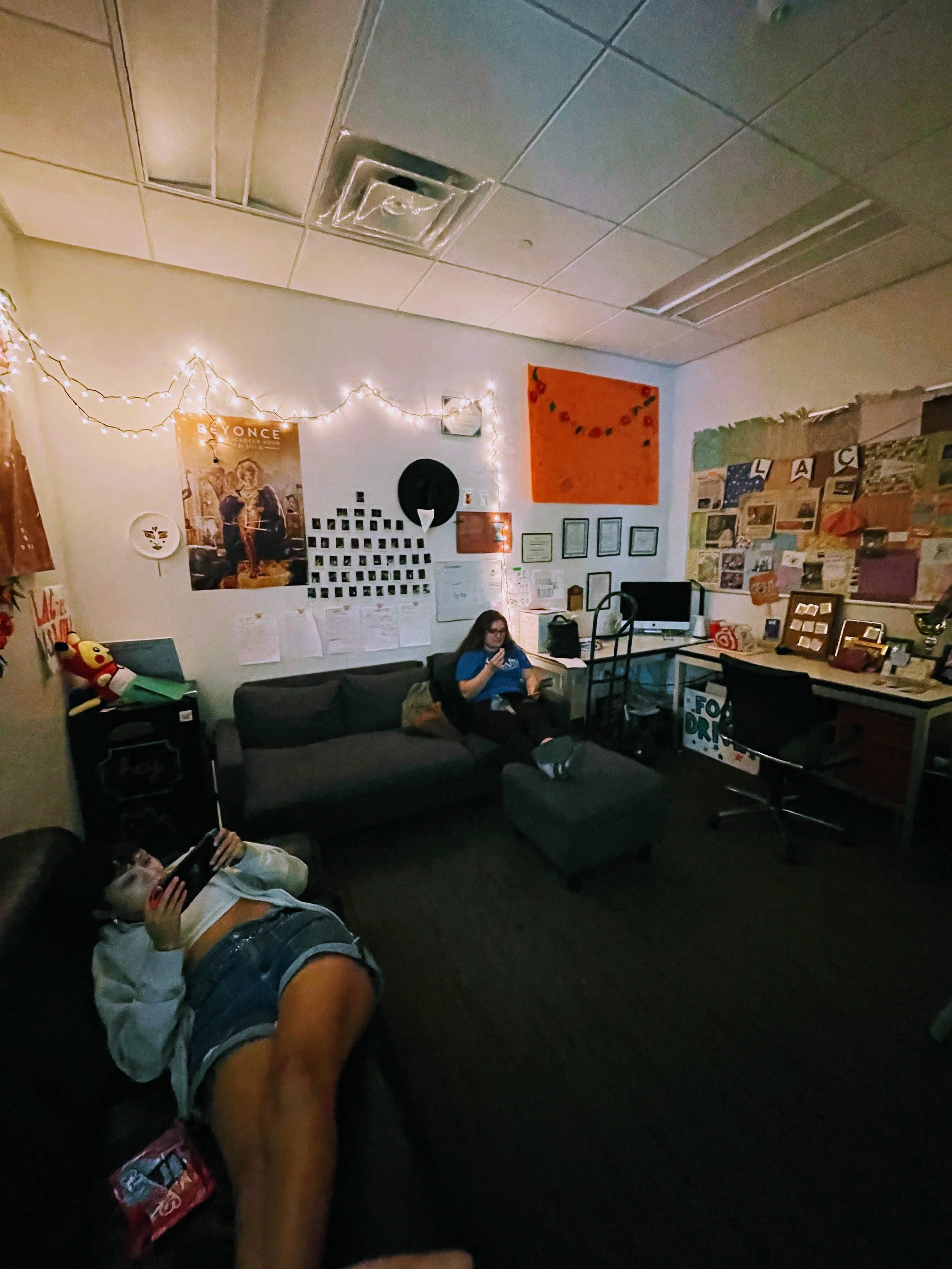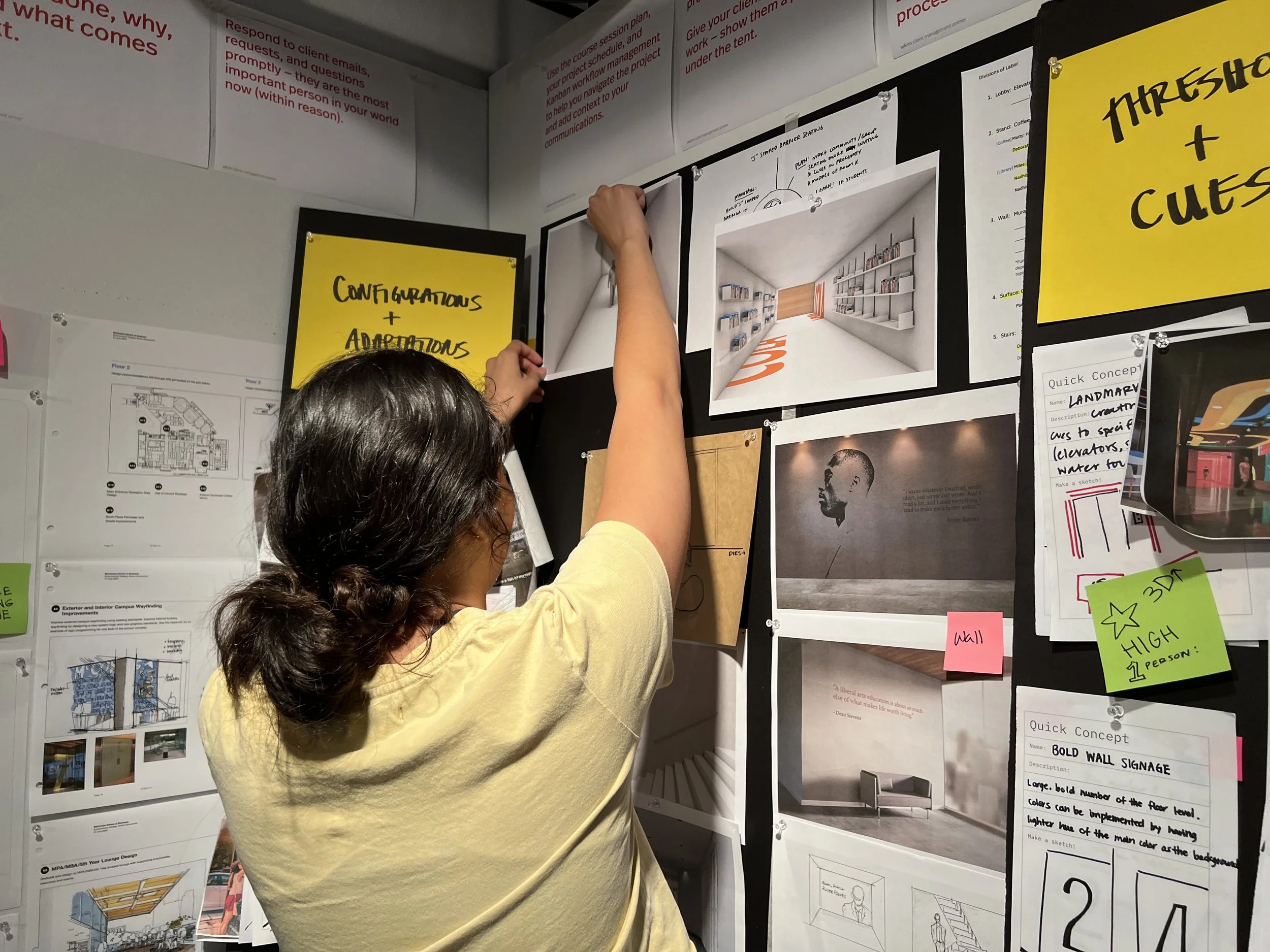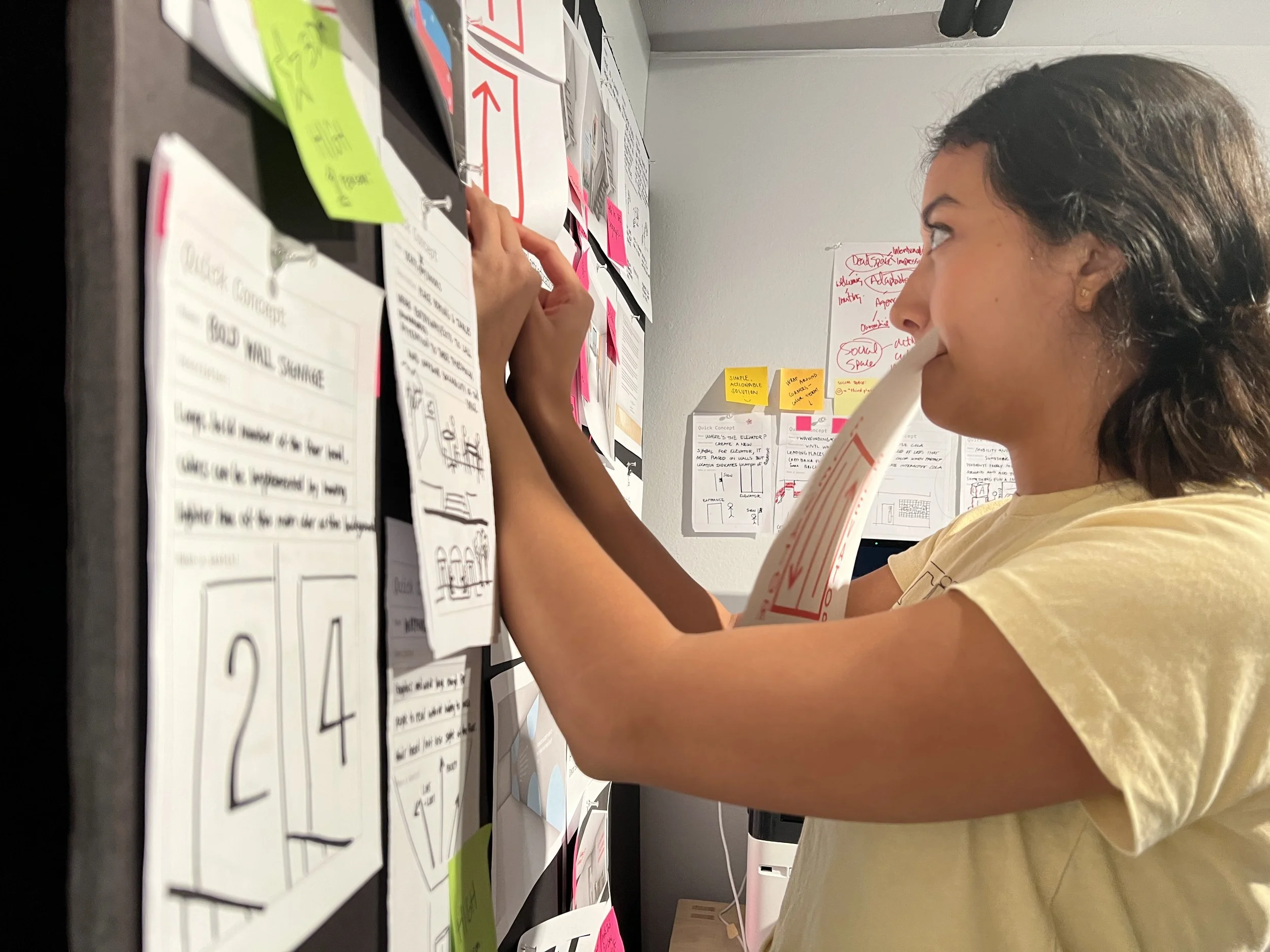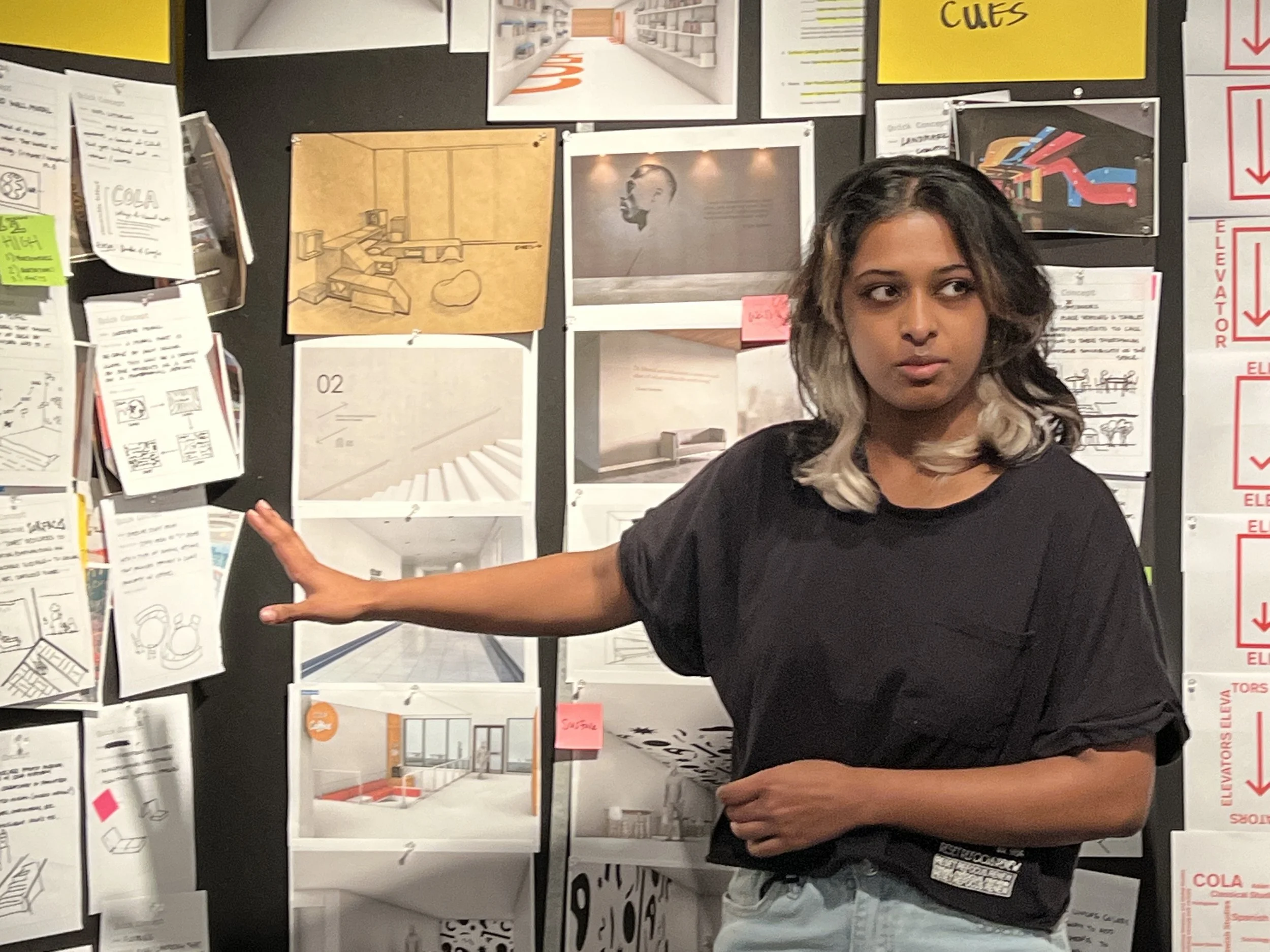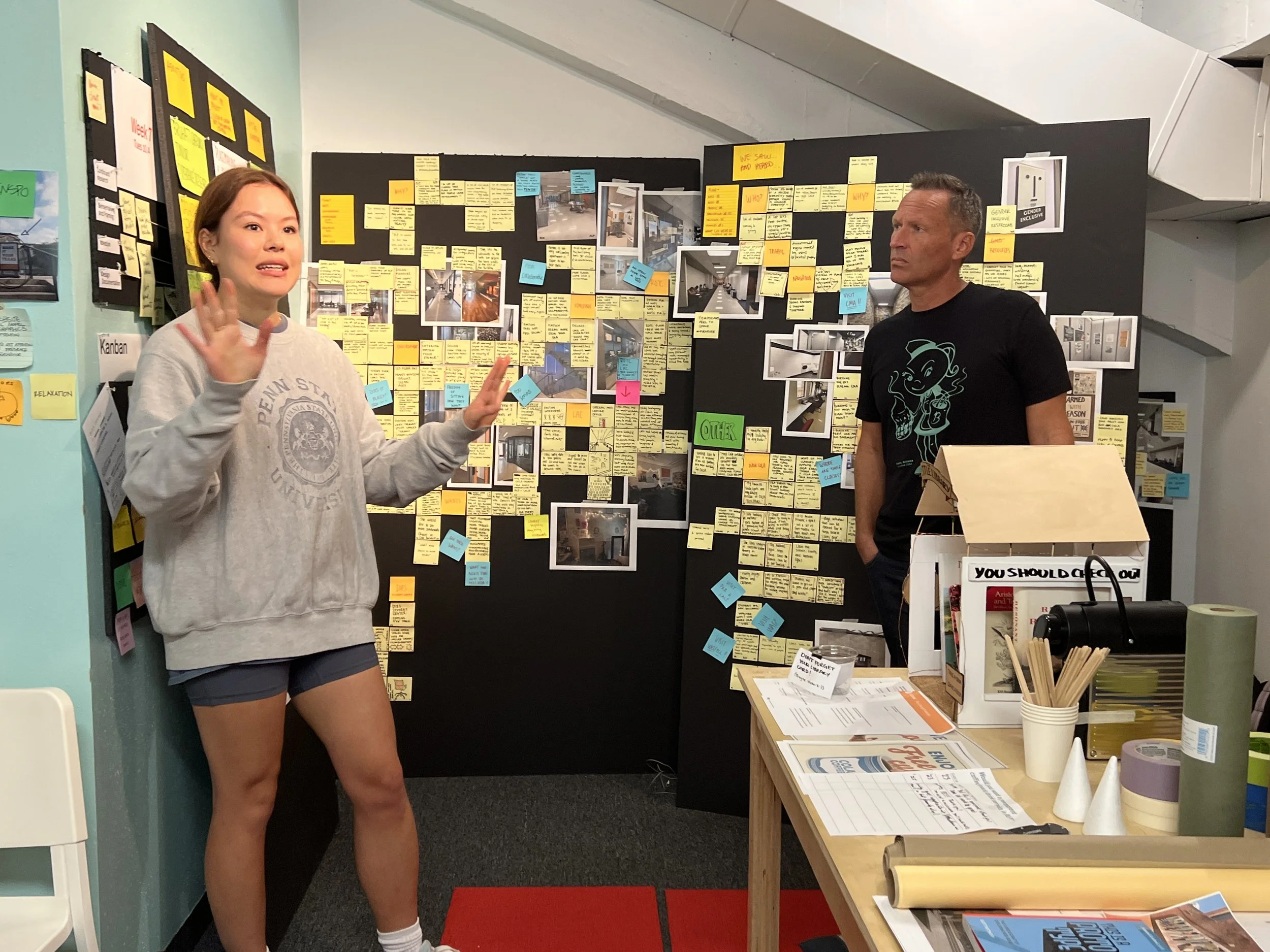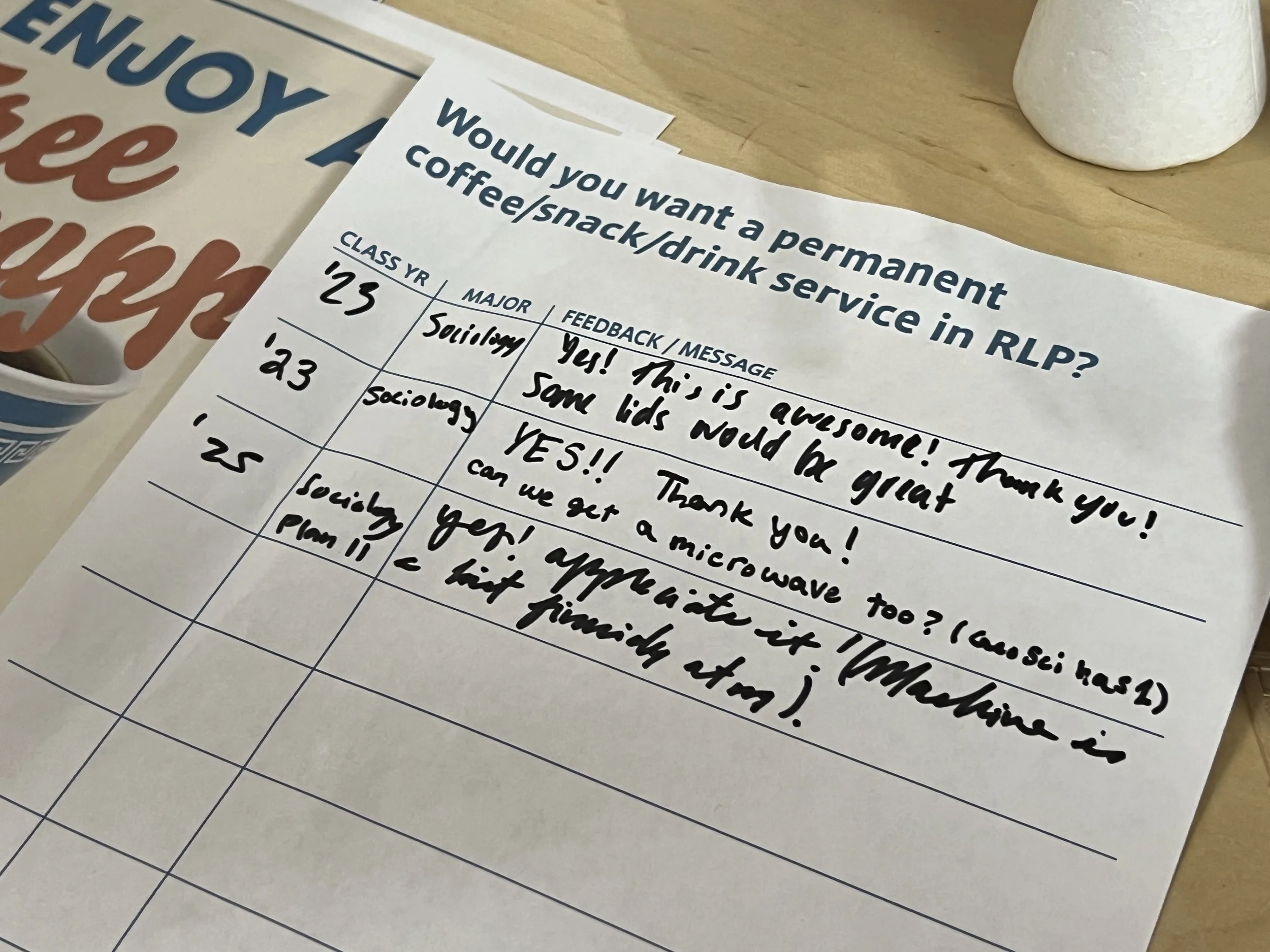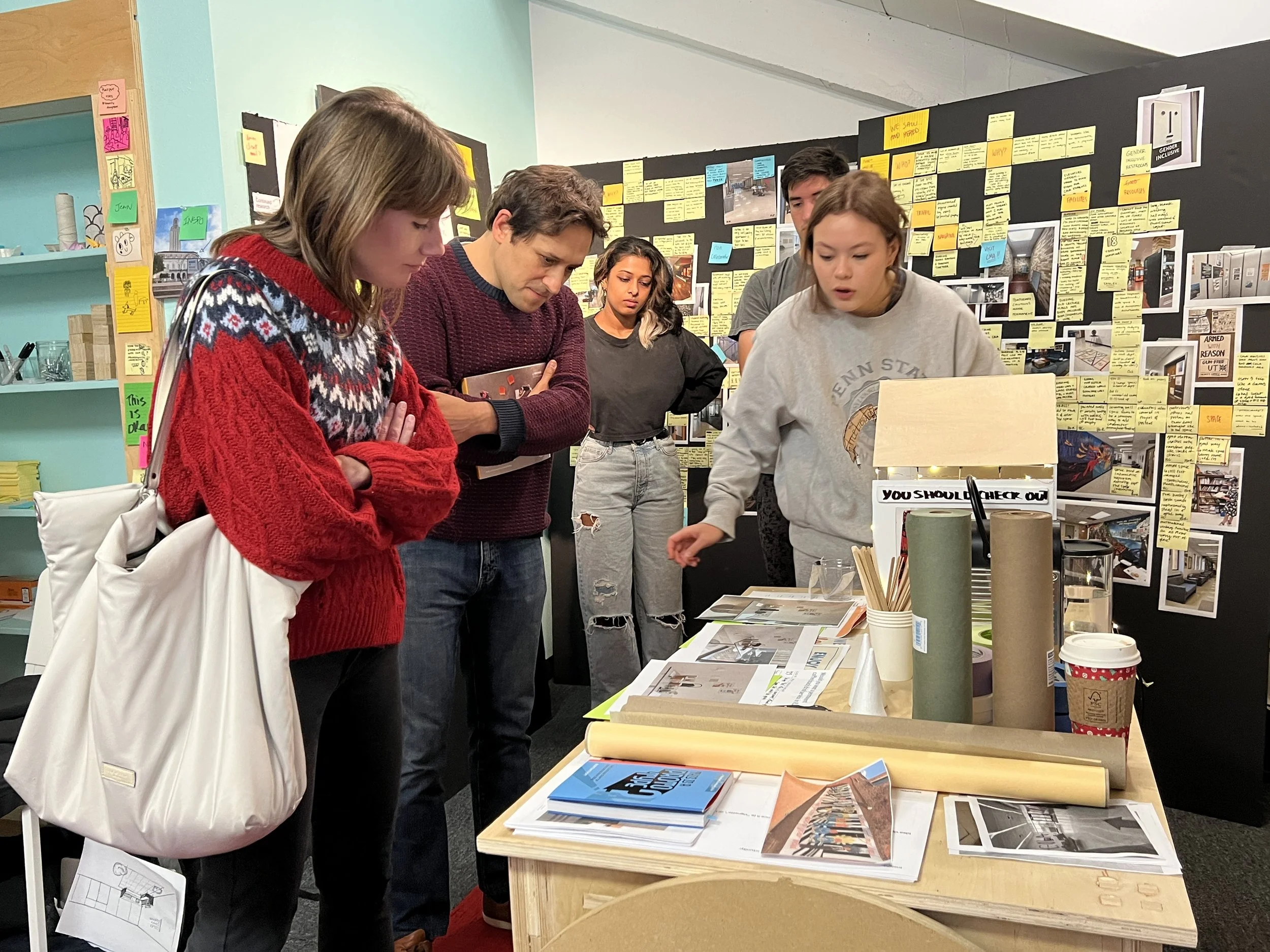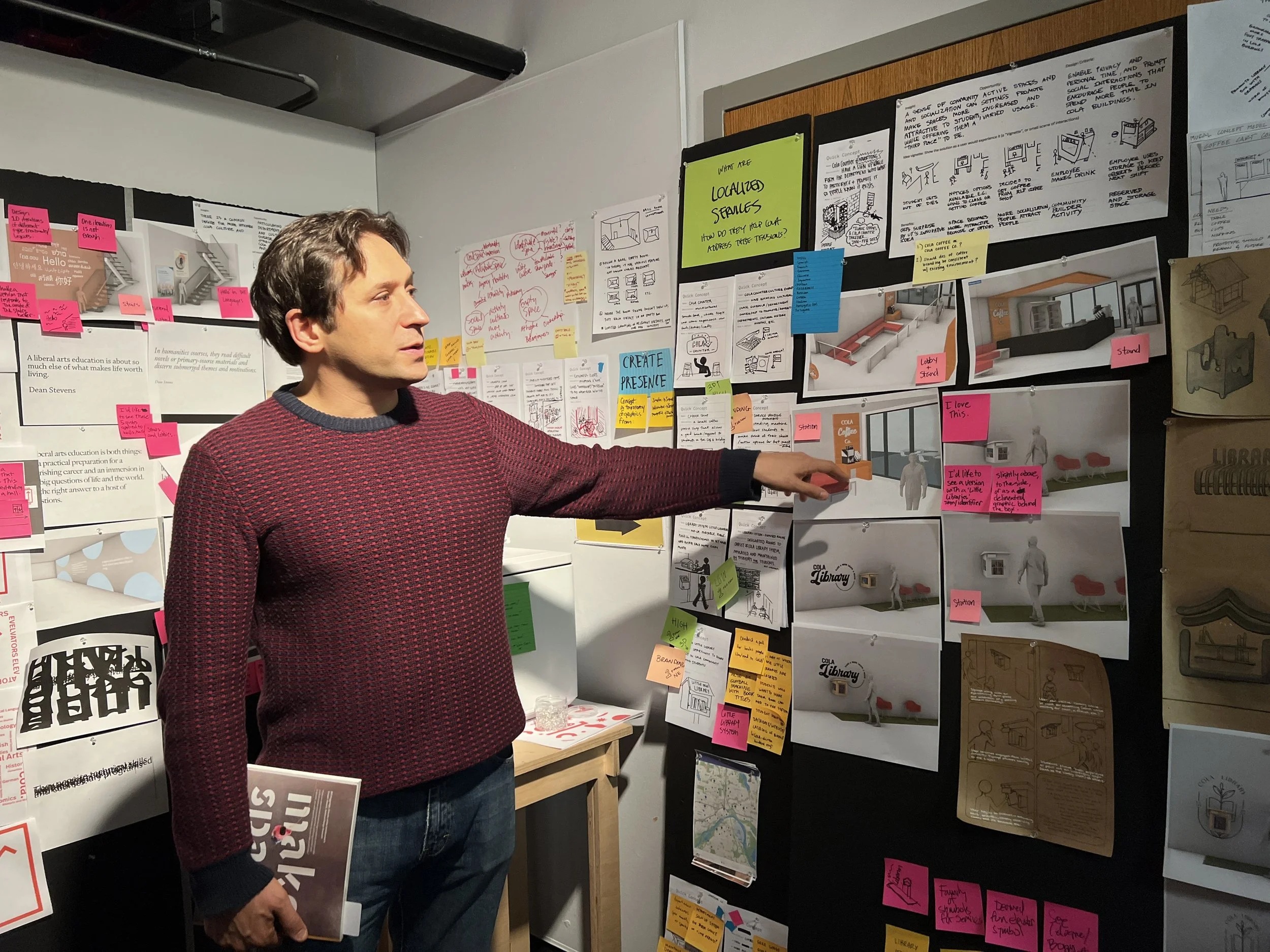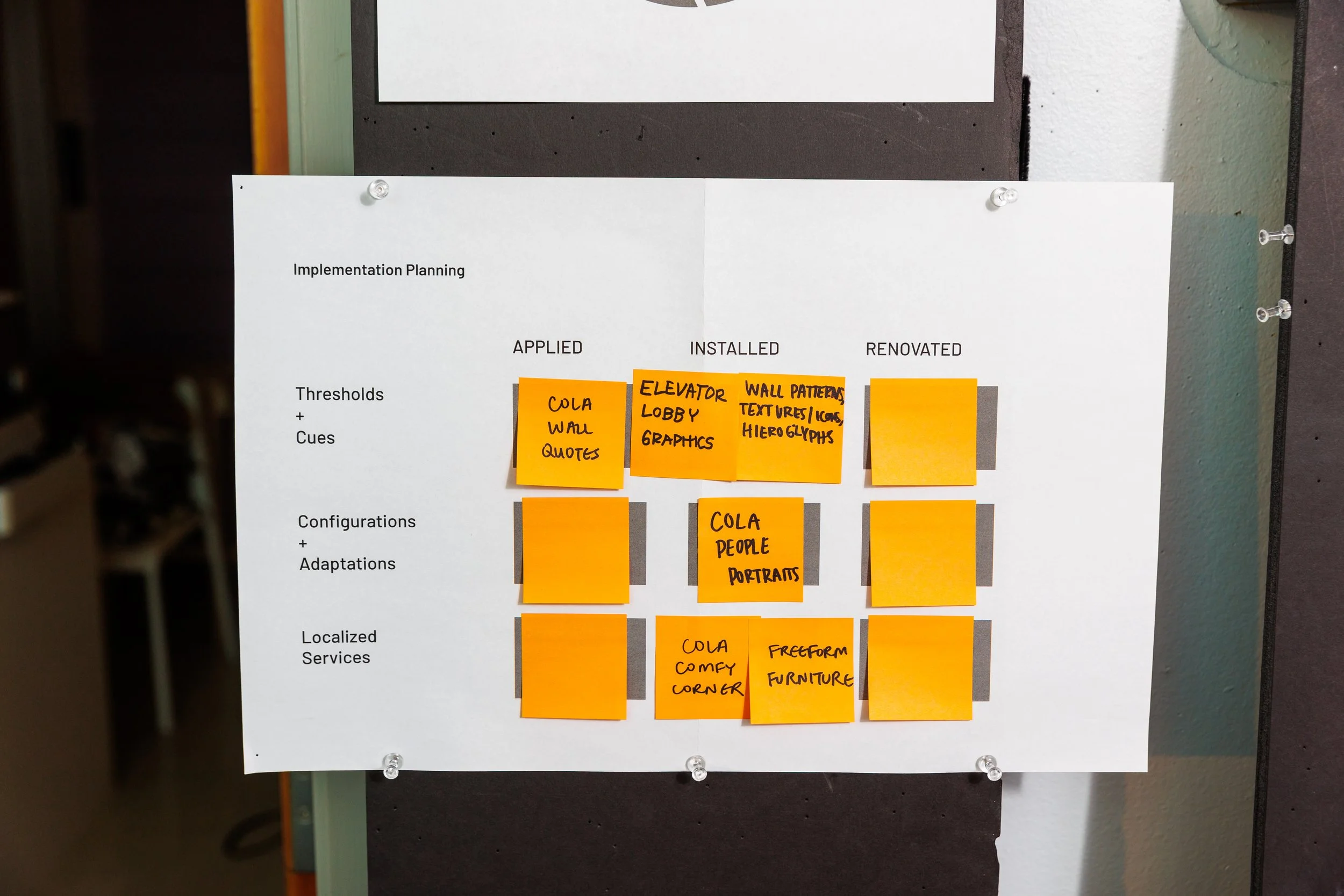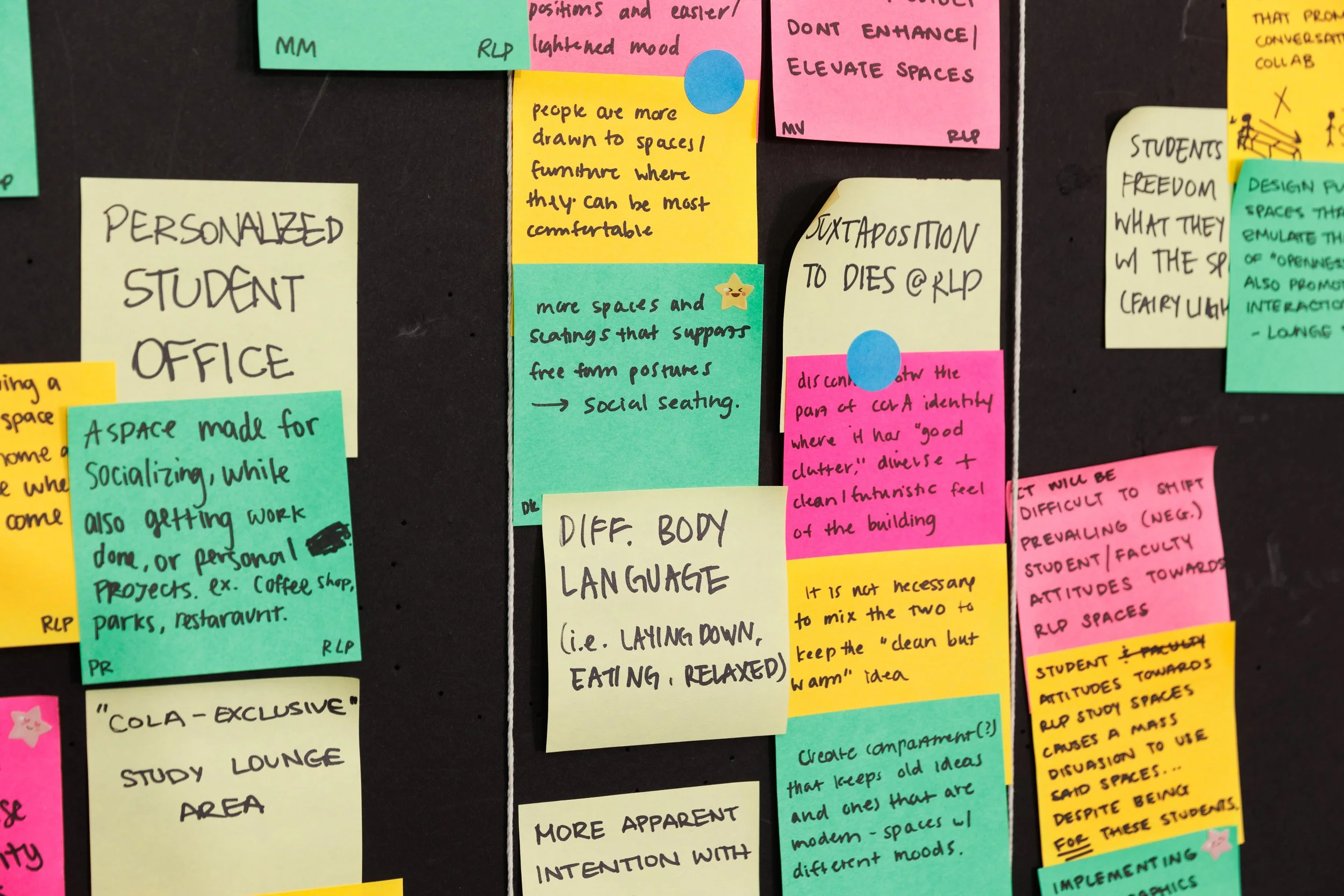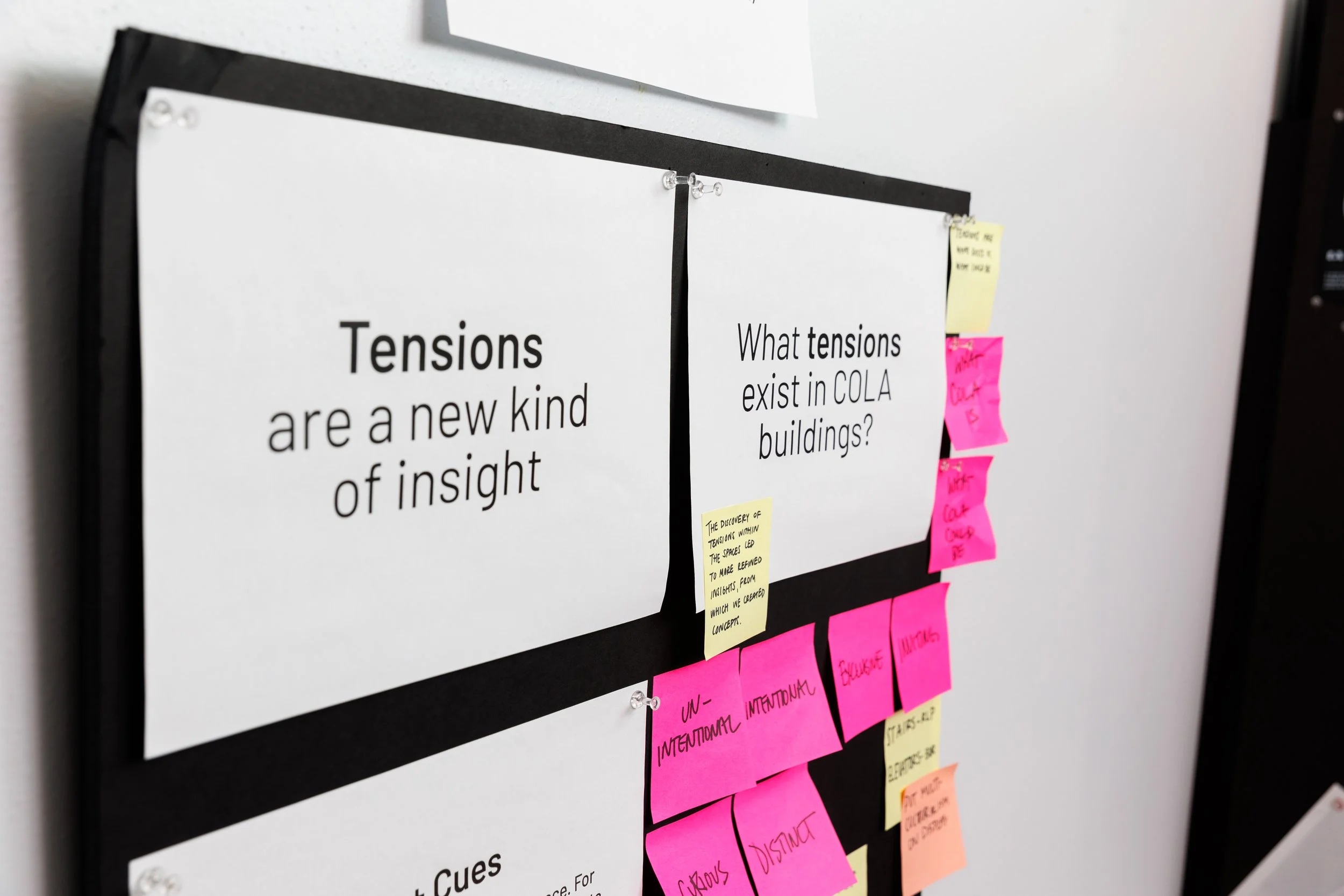Conducting Research at the Robert L. Patton (RLP) and Burdine buildings at the College of Liberal Arts

Robert L. Patton Building
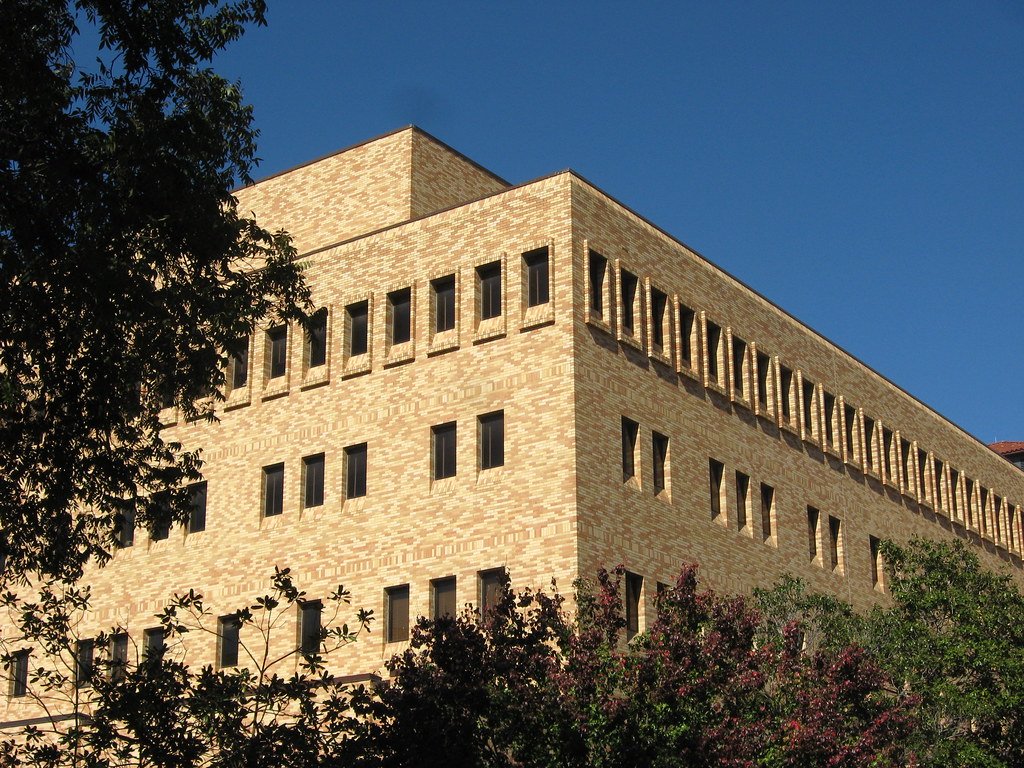
Burdine Building
Space is the body language of an organization.
Scott Doorley & Scott Witthoft
We used this core principle from the book Make Space, co-authored by Prof. Scott Witthoft, formerly Associate Professor of Practice in the School of Design and Creative Technologies, to provide a conceptual framework for research and design in addition to other insights, case studies, and principles that complemented our work.
Prof. Witthoft’s framework helped us to understand and design opportunities for:
-
Broad spatial types that share an overall purpose. Examples include thresholds such as doorways or openings, and transitions such as hallways and corridors.
-
The specific aspects of people or space that can be enhanced or to impact behavior. For example, personal posture can be altered with seating modifications. Ambiance attributes, such as lighting, can be used to elevate mood.
-
Actions are behaviors and tasks. For example, designers tend to saturate workspaces with project inspiration and artifacts to inform and inspire themselves.
-
Cultural values and habits. For example, “Bias toward collaboration” is a core value at the d.School at Stanford University (collaboration is an important characteristic of design practice).
See Doorley & Witthoft, Make Space, p39
About our research
Our field research was primarily observational, included interviews with students, faculty, and staff, and required us to immerse ourselves in the experience of using and visiting the buildings. Some discoveries were especially meaningful and inspired a few of our ideas.
We attended a Slavic Studies tabling event that showed how a department could demonstrate its cultural identity through service and style.
We discovered that the ROTC chapter in COLA had created a vibrant space that seemed to be in contrast to the typical spatial ethic in the college, and included a barber shop!
The LAC office offered a haven for students and staff giving them the agency to make the place theirs. “Good clutter” was made of string lights, whiteboards, comfy furniture, and expressive posters.
Placemaking Insights
Space is the body language of…
The College of Liberal Arts.
Observation
Spaces in RLP and BUR intended for public use can be unwelcoming and exclusive.
Insight
Space is always communicating how it is meant to be used through its physical and social properties.
Opportunity
Establish a clear and consistent COLA presence that activates the “Extraordinary community of students, faculty, and staff dedicated to thinking, learning, growing, doing, and changing the world,” (Dean Stevens).
Make Space Insight
Design with Multiple Situations
in Mind.
What other functions, outside its intended use, is the room in question really being used for? Assuming you want that activity to continue, how might you quickly alter the space to support that activity (or activities)?
People attract people. Activity encourages activity.
Observation
A sense of community and socialization can make spaces more attractive to students (and faculty) while offering them a “third place” to be. A “third place” is a coveted setting somewhere other than work, school or home.
Insight
Active spaces and settings promote increased and varied usage. Some common and meaningful activities include meeting, studying, socializing, zoning out, waiting, relaxing, snacking, reading, people watching.
Opportunity
Enable privacy and personal time, and prompt social interactions that encourage people to spend more time in COLA buildings.
Make Space Insight
It’s About People.
Enable privacy and personal time, and prompt social interactions that encourage people to spend more time in COLA buildings.
Observation
Students gravitate towards spaces where they can move, adjust, subtract and add to the physical environment according to their wants and needs.
Flexible spaces are desirable.
Insight
Students want the freedom to create their ideal and needed spaces because this freedom supports different kinds of activities and actions.
Opportunity
Design flexible spaces where students have ample furniture and place autonomy.
Some of the properties of flexible spaces are sittable, sleepable, loungeable, conversational, interactive, private, collaborative.
Make Space Insight
The Responsibility-Adjustability Slide Rule.
The more responsible users are for a space, the more adjustable the space can be.
Put COLA multiculturalism
on display.
Observation
There is a common desire for more noticeable COLA culture and department identities in its buildings.
Insight
Articulating visible department identity and cultivating the diverse curriculum strengthens the COLA community and COLA pride.
Opportunity
Promote a sense of COLA identity, community, and pride by visually articulating COLA spaces and helping individual departments, faculty, and students express themselves in their building and spaces.
Make Space Insight
Context is Content.
Space transmits culture. Environments can be used not just to represent cultural values but also to inspire them.
Tensions: a new kind of insight
During the process, we discovered a new kind of insight that emerged from concept development, ideation, and critique that a visiting critic referred to as “tensions,” or competing objectives and conditions that COLA buildings, building management, and its occupants seemed to be contributing to.
Unintentional
•
INTENTIONAL
•
Exclusive
•
INVITING
•
Hard-to-Find
•
OBVIOUS
•
Clean & New
•
LIVED IN
•
Large
•
INTIMATE
•
Tense
•
COMFORTABLE
•
Empty
•
FULL
•
Quiet
•
Conversational
•
Institutional
•
INSPIRING
•
Serious
•
RELAXED
•
Fixed
•
MOVABLE
•
Serviceable
•
DESIRABLE
•
Unintentional • INTENTIONAL • Exclusive • INVITING • Hard-to-Find • OBVIOUS • Clean & New • LIVED IN • Large • INTIMATE • Tense • COMFORTABLE • Empty • FULL • Quiet • Conversational • Institutional • INSPIRING • Serious • RELAXED • Fixed • MOVABLE • Serviceable • DESIRABLE •
How to use tensions
Tensions are a way to understand and explore the gaps between what COLA is and what COLA could be.
This might help the College of Liberal Arts develop cultural attitudes or biases about how you use your spaces.
Take any two tensions, then consider how an insight and concept (or concepts) might help to resolve them.
